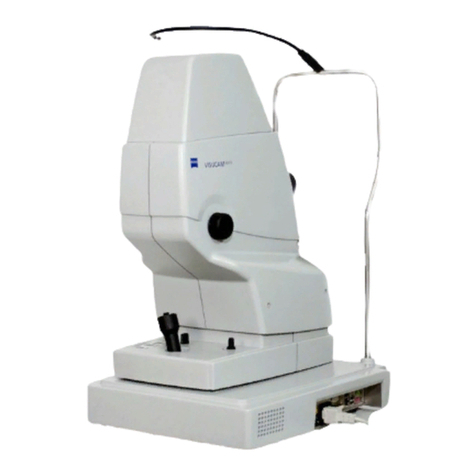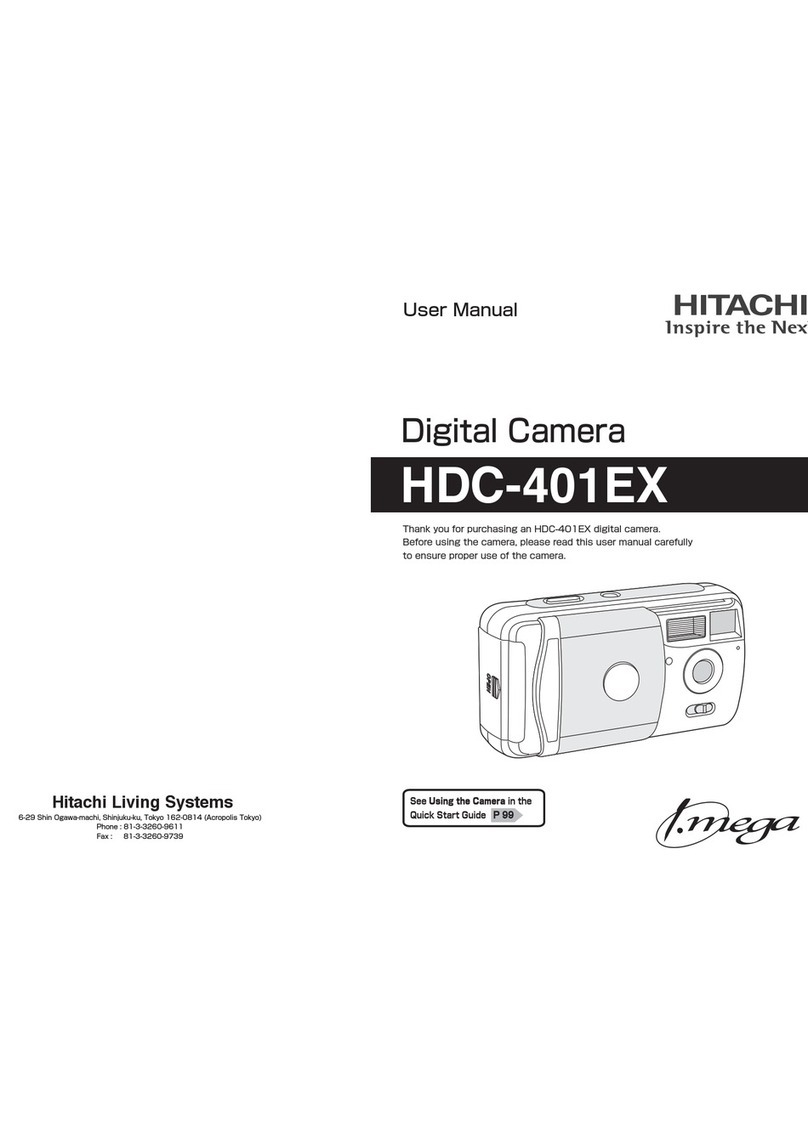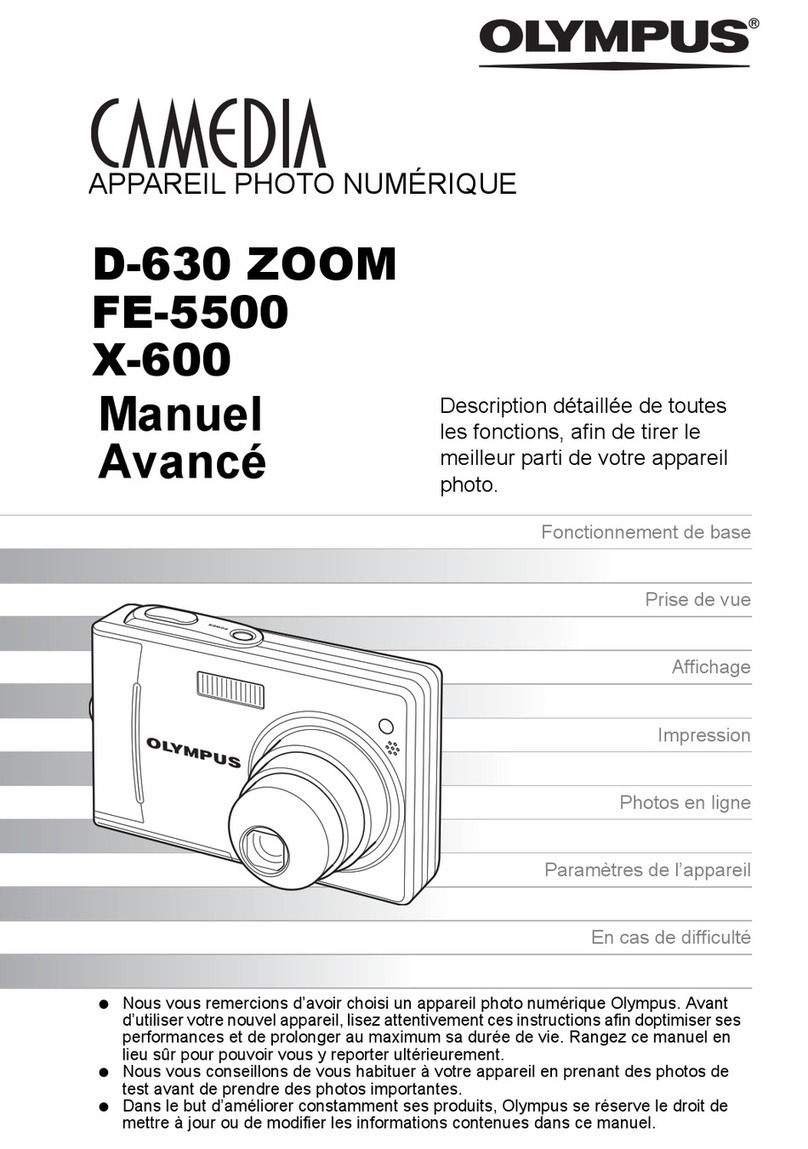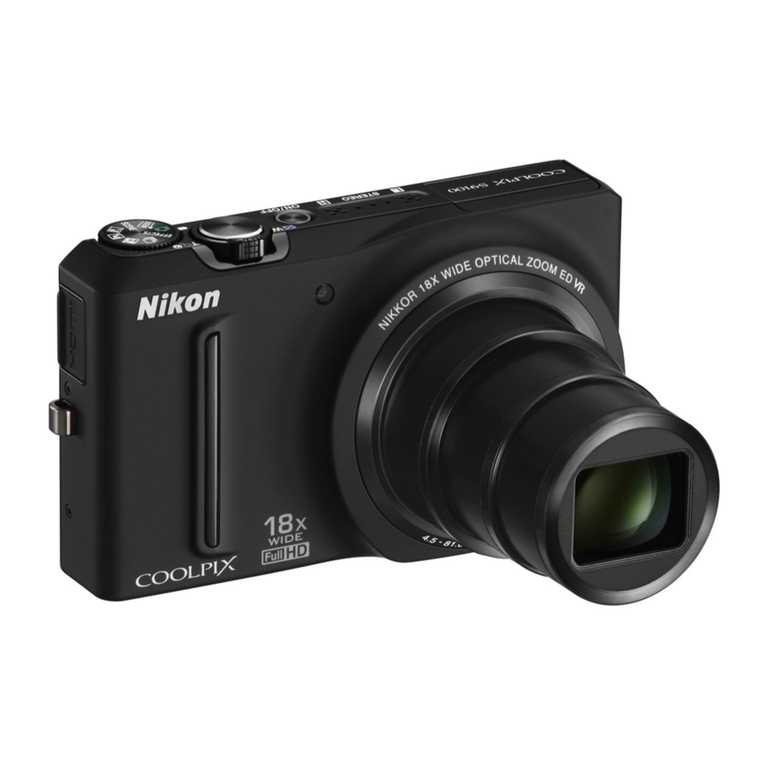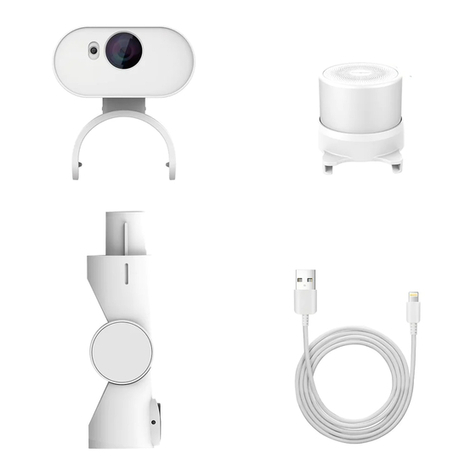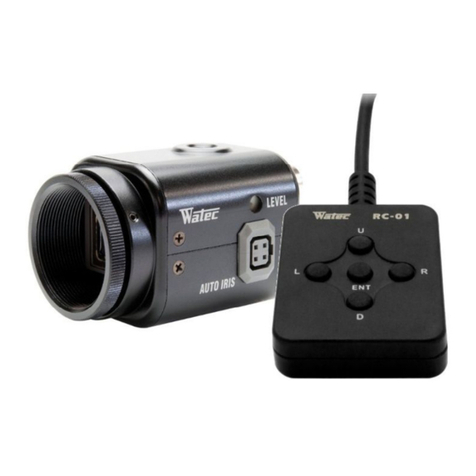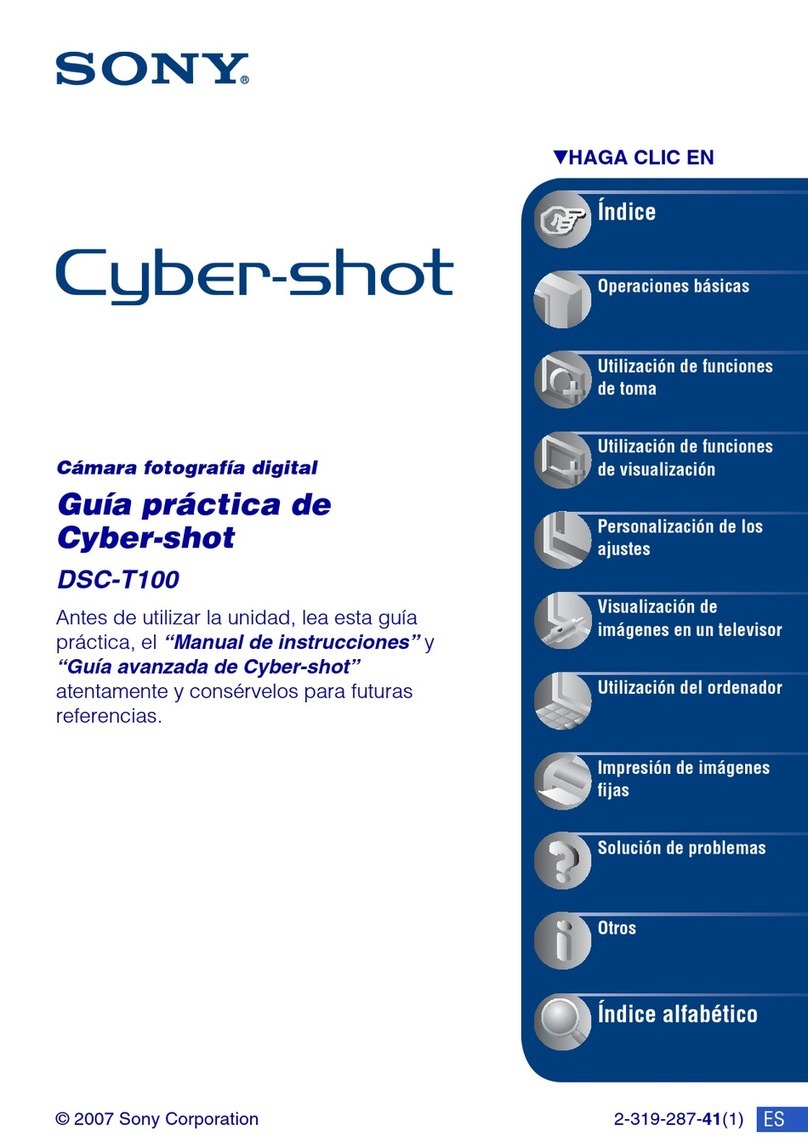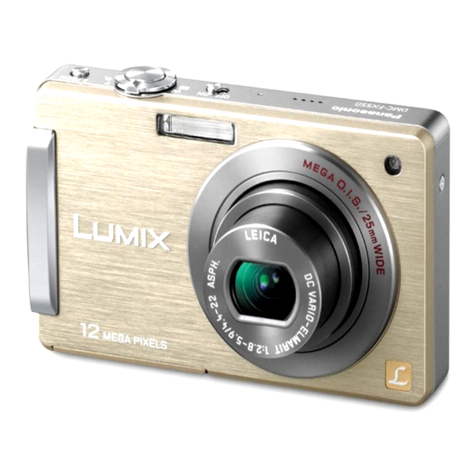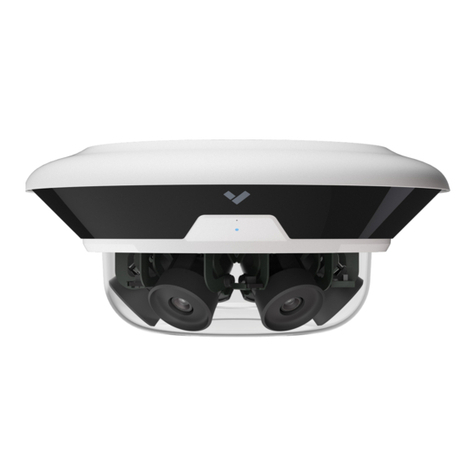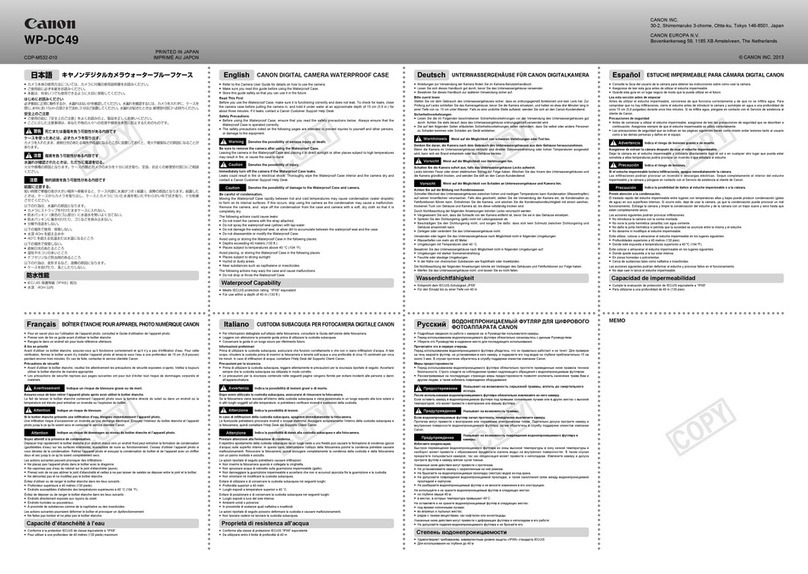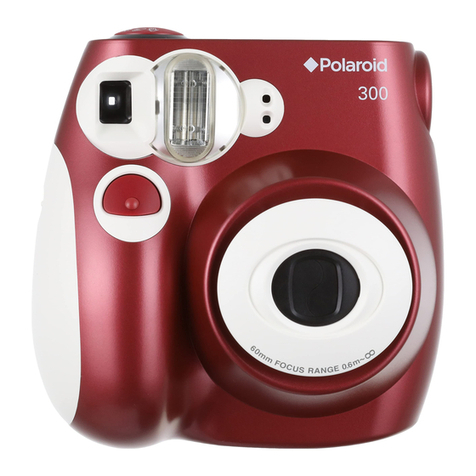GOM ARAMIS User manual

0000001503_002_EN_02-12-2019
Precise Industrial 3D Metrology
ARAMIS
User manual hardware
ARAMIS Adjustable SRX

Legal Notes
No part of this publication may be reproduced in any form or by any
means or used to make any derivative work (such as translations, transfor‐
mations or adaptations) without the prior written permission of GOM.
GOM reserves the right to revise this publication and change contents
from time to time without obligation on the part of GOM to provide noti‐
fication of such revision or change.
GOM provides this manual without warranty of any kind, either implied or
expressed, including, but not limited, to the implied warranties of mer‐
chantability and fitness for a particular purpose.
GOM may improve or change the manual and/or the product(s) described
herein at any time.
Copyright © 2018
GOM GmbH
Schmitzstr. 2
38122 Braunschweig
Germany
www.gom.com
Tel.: +49 (0) 531 390 29 0
Fax: +49 (0) 531 390 29 15
Email: [email protected]
All rights reserved
For further information on software licenses, refer to the direct help of the
GOM application software or the web interface of the GOM hardware.
0000001503_002_EN_02-12-2019 Page 2 (56)

Table of Contents
Legal Notes.............................................. ......2
1 Important Notes...........................................5
1.1 Standard Signal Words......................... ......5
1.2 Safety and Health Hazard Notes..............5
2 Introduction...................................................7
2.1 Fields of Application....................................7
3 Brief Introduction to the ARAMIS
System.............................................................8
3.1 Typical Measuring Procedure....................9
4 System Overview.................................... ... 10
4.1 Important Features................................ ... 10
4.2 Technical Data............................................ 10
4.3 Definition of Terms................................ ... 12
4.4 Sensor Configurations.......................... ... 12
4.4.1 Defined Measuring Volumes.................. 13
4.4.2 Further Configuration Examples........ ... 14
5 Control Elements....................................... 16
5.1 Lenses........................................................... 16
5.2 Handling of Tommy Screws.................... 17
5.3 Handling of the Camera Locking
Screws....................................................... ... 17
6 Wireless Remote Control..................... ... 19
6.1 Prepare the Remote Control............... ... 19
6.2 Explanation of the Function Keys...... ... 20
7 Set Up Sensor.......................................... ... 21
7.1 Set Up Sensor with Software.............. ... 21
7.2 Adjust Measuring Distance................. ... 22
7.3 Adjust Slider Distance........................... ... 22
7.4 Adjust the Camera Tilt Angle................. 25
7.5 Adjust the Camera Angle........................ 27
7.6 Lock Cameras.......................................... ... 28
7.7 Adjust the Focus..................................... ... 28
7.8 Adjust the Aperture.................................. 29
8 Specimen Lighting (Option)................... 31
8.1 Adjust the Polarizing Filters for the
Specimen Lighting................................. ... 31
9 Sensor Warm-Up.................................... ... 33
10 Calibrate the Sensor.............................. ... 34
10.1 How to Handle Calibration Objects.. ... 35
10.2 Calibration Conditions............................. 36
10.2.1 When is Calibration Necessary?......... ... 36
10.2.2 Prerequisites............................................ ... 36
10.3 Calibrate Sensor with Calibration
Panel CP40............................................... ... 38
10.3.1 Handling Instructions for the Cali‐
bration Panel CP40................................ ...40
10.3.2 Load Calibration Data........................... ... 41
10.4 Calibration Procedure........................... ... 41
10.5 Calibration Result...................................... 43
10.6 Calibrating ARAMIS Sensor with
Calibration Cross CC20.............................43
10.6.1 Handling Instructions for Calibra‐
tion Cross CC20.......................................... 44
10.6.2 Load Calibration Data........................... ... 45
10.6.3 Prepare the Calibration............................ 46
10.6.4 Position Calibration Cross.................... ... 46
10.6.5 Calibration Procedure........................... ... 46
10.6.6 Calibration Result...................................... 50
11 Cabling......................................................... 52
11.1 Cabling of ARAMIS Adjustable.............. 52
11.1.1 Cabling of ARAMIS Adjustable SRX.. ...52
12 Declaration of Conformity................... ... 55
12.1 Wording of the Original Declaration
of Conformity.......................................... ... 56
0000001503_002_EN_02-12-2019 Page 3 (56)

0000001503_002_EN_02-12-2019 Page 4 (56)

1 Important Notes
1.1 Standard Signal Words
In this publication the following standard signal words can be used:
DANGER
▶The label points to an imminent danger. The situation can lead to seri‐
ous bodily harm or death!
WARNING
▶The label points to a dangerous situation. The situation can lead to
serious bodily harm or death!
CAUTION
▶The label points to a dangerous situation. The situation can lead to
light bodily harm!
NOTICE
▶The label points to a situation which can lead to material damages.
The damages can result on the product or in the vicinity of the prod‐
uct!
Info
The label indicates important application notes and useful information.
1.2 Safety and Health Hazard Notes
DANGER
Danger of explosion due to static electricity and other eects
▶Never operate the device in explosive areas!
WARNING
The used laser meets laser class 1M according to DIN EN 60 825-1. The
optical output power is < 0.39 mW. The wavelength is 650 nm.
▶Do not look directly into the laser light with optical instruments (e.g.
magnifier, binoculars)!
WARNING
In extreme positions, stands with horizontal extension arms can fall
over.
Danger of destruction!
▶Avoid such extreme positions! Use the stand only on a safe and steady
ground!
CAUTION
Artificial optical radiation
Looking directly into the light source can be harmful for your eyes.
▶When you operate the device, do not look into the light source or into
the reflected light for a longer time!
0000001503_002_EN_02-12-2019 Page 5 (56)

CAUTION
The power cord connections must comply with the valid regulations of the
respective countries.
▶Always connect the supply voltage technically and legally correct!
▶Always connect the devices according to the country regulations!
CAUTION
The local supply voltage must be within the operating voltage range of
the device!
An incorrect operating voltage can cause malfunctions or the risk of fire.
▶Operate the equipment only with the operating voltages printed on
the housing!
NOTICE
▶Never connect cables during operation! Never disconnect cables dur‐
ing operation!
NOTICE
Humidity and water can be the cause for malfunctions and damages to
the device.
The devices must not come into contact with water.
▶Before cleaning, disconnect the power plug!
▶For cleaning, use a slightly moist cloth!
NOTICE
When the housing is open during operation, there is risk of electric
shock.
▶Operate the device only with closed housing.
▶Experts are only admitted to open the housing when no voltage is
supplied!
NOTICE
Temperature variations can cause condensation.
The ambient temperature must be between +5 °C and +40 °C.
▶Do not expose the device to rapid temperature variations because
such variations can cause condensation!
▶Always operate the device within the given temperature range!
NOTICE
Strange objects in the device can jeopardize the operational safety.
Electric shocks and malfunctions can occur.
▶Do not stick any strange objects into the housing!
Important Notes
0000001503_002_EN_02-12-2019 Page 6 (56)

2 Introduction
This manual is intended for qualified personnel who is familiar with basics
of the deformation analysis. Basic PC knowledge (windows-based pro‐
grams and operating systems) is expected.
For operating the system optimally, the ability to visualize in 3D and a
color vision ability are assumed.
This user manual gives you a short overview of the measuring system
ARAMIS.
It contains information on:
•System parts of the sensor
•System installation
•Sensor settings
•Changing the camera
•Calibration
•Wiring plans
2.1 Fields of Application
The following list contains examples for possible applications.
•Material testing
•Strength assessment
•Component dimensioning
•Examination of non-linear behavior
•Characterization of creep and aging processes
•Determination of material characteristics
•Analyzing the behavior of homogeneous and inhomogeneous materi‐
als during deformation
•Strain computation
0000001503_002_EN_02-12-2019 Page 7 (56)

3 Brief Introduction to the ARAMIS System
ARAMIS is a non-contact optical 3D measuring system.
The system analyzes, computes and documents object deformations, rigid
body movements and the dynamic behavior of measuring objects.
The ARAMIS measuring system is a stereo camera system for analyzing
statically or dynamically loaded parts. Precise 3D coordinates are captured
and then metrologically evaluated.
With ARAMIS, you can also measure in 2D. Then, you capture the images
for the measurement series with only one camera.
Thus, you get the possibility to capture images, for example, in a narrow
neighborhood or through thick window panes.
The system determines the 3D coordinates of discrete points over a certain
period of time. The temporal resolution depends on the frequency used
for the image recording. The options of the camera frequencies depend
on the sensor used or the cameras used.
Stereo camera setup •You can determine 3D coordinates.
•You can measure any objects in 3D.
Single camera system •You can determine only 2D coordinates.
•You can measure flat objects.
Info
You can see a detailed comparison of 2D and 3D measurements in the
GOM webinar “2D and 3D – Image Correlation in Materials and Compo‐
nents Testing”. You can download the webinar from the GOM Service
Area or view it on the GOM Metrology YouTube Channel.
The software computes coordinates in 3D space. The software clearly
assigns the points from the camera images to each other. To compute the
3D coordinates, the software needs reference points applied on the part
or an applied stochastic pattern.
Fig. 1: Principle of the digital image correlation
0000001503_002_EN_02-12-2019 Page 8 (56)

The system measures 3D coordinates over time. From the 3D coordinates,
displacements, strains and derived values such as velocities or accelera‐
tions are computed.
The first image in the measuring project represents the initial state of the
object. To compute the displacement of the pattern marks to each other,
the software compares the coordinates computed during the measuring
procedure.
3.1 Typical Measuring Procedure
You can position the ARAMIS Adjustable system freely on a stand. If you
use a 3D measuring setup, use two cameras (stereo setup). You must cali‐
brate both cameras before measuring. You create the measuring project in
the software. Then, you capture the images in various load stages of the
specimen.
After successful computation, the measuring result is available as 3D view.
All further result representations like statistical data, sections, reports, etc.,
are derived thereof.
Brief Introduction to the ARAMIS System
0000001503_002_EN_02-12-2019 Page 9 (56)

4 System Overview
4.1 Important Features
The ARAMIS Adjustable SRX system is a measuring system that consists of
modules. Not all components that are listed must be part of the scope of
delivery. The following primarily describes a fully equipped system for 3D
applications.
Each ARAMIS Adjustable SRX system consists of the following compo‐
nents:
•Camera support
•One or two cameras with 8 GB camera memory each (optional)
•12M (4096 x 3068) pixels camera resolution
•Pixel size of 5.5 μm
••Frame rate with optional camera memory: from 335 fps (full
frame) up to 2000 fps (partial image)
•Frame rate with PC memory: from 75 fps (full frame) up to 490 fps
(partial image)
•Sensor controller (GOM Testing Controller)
•Sensor connection hub
•Two camera lenses
•High-performance computer
•Application software
Optional components for the ARAMIS Adjustable SRX system:
•LED specimen lighting
•Laser pointers for optimum sensor adjustment
•Control of the light sources via the GOM Testing Controller
The sensor controller (GOM Testing Controller) supplies the power supply
for the cameras and the laser pointer and the trigger signals for control‐
ling the image recording.
The software controls both cameras for the image acquisition.
The data of the two cameras is transmitted to the high-performance com‐
puter via 10 GBit/s Ethernet cables.
Defined measuring volumes with preadjusted camera lenses are available
(see 4.4 Sensor Configurations).
You can adjust a used measuring volume individually to your measuring
task.
To each measuring volume belongs a calibration object.
4.2 Technical Data
In the following table Tab. 1, you find an overview of the technical data of
the ARAMIS Adjustable SRX system.
0000001503_002_EN_02-12-2019 Page 10 (56)

System ARAMIS Adjustable SRX
Default measuring vol‐
ume [mm]
33 x 25 x 1
to
1370 x 1100 x 1100
Max. frame rate [fps] 335 (full frame), up to 2000 (partial image)
Camera resolution [pix‐
els] 4096 x 3068
Ambient conditions +5 °C to +40 °C (non-condensing)
Voltage range (typical) Supply voltage via GOM Testing Controller
Power consumption Typically 15 W per camera
Connection camera to
PC 10 GigE
Maximum cable length
between sensor and PC 10 m
Tab. 1: Technical data
System Overview
0000001503_002_EN_02-12-2019 Page 11 (56)

4.3 Definition of Terms
Fig. 2: The figure shows a 3D sensor unit in top view.
Height H (measuring vol‐
ume)
Length L (measuring vol‐
ume)
Width W (measuring vol‐
ume)
Center of the measuring vol‐
ume
Measuring distance
Camera angle
Camera lens left L
Camera lens right R
Camera support
Slider left
Slider right
Base distance
Slider distance
Inner width
4.4 Sensor Configurations
Depending on the sensor and the lenses used, a three-dimensional area
results at a defined distance in which the system acquires image data. This
area is the measuring volume.
System Overview
0000001503_002_EN_02-12-2019 Page 12 (56)

Choose the measuring volume such that the measuring object fills the
entire image as best as possible at the correct measuring distance in the
measuring area.
You choose a measuring volume depending on your measuring task.
Important factors are the size of the specimen and the space available for
the measuring setup. The chosen measuring volume defines the distance
of the sensor to the specimen, the slider distance and the required num‐
ber of sets of camera lenses. You can work with dierent measuring dis‐
tances on an existing camera support by changing the sets of lenses on
the camera. Thus, you can measure objects with dierent sizes at dierent
distances.
Info
GOM recommends to comply with the given camera angle of 25°.
For many applications, defined measuring volumes with preadjusted cam‐
era lenses are available (see 4.4.1 Defined Measuring Volumes).
You can adjust a used measuring volume individually to your measuring
task by the choice of the camera lenses and the variation of the slider dis‐
tance.
For the available camera lenses, you find further sample configurations in
the table in 4.4.2 Further Configuration Examples.
Furthermore, you can set up individual measuring volumes. Interpolate
the setting values for slider and measuring distance, if necessary.
Focal length of the lens, slider distance, measuring distance and size of the
measuring volume depend directly on each other.
•At the same measuring distance, dierent camera lenses result in dif‐
ferent measuring volumes.
•With the same measuring volume, dierent camera lenses result in dif‐
ferent measuring distances.
•With the same camera lenses, a change of the slider distance results in
a change of the measuring distance and the measuring volume size.
The aperture adjustment and the depth of field depend also on each
other. Camera lenses with a large focal length need a smaller aperture
(large aperture value) to get an equivalent depth of field as camera lenses
with a small focal length.
In general, the following applies: The smaller the aperture (large aperture
value), the larger is the depth of field.
With a small aperture, the camera chip receives less light. Then, the images
are possibly not exposed suciently. The contrast in the images, which is
required for the evaluation, is missing. Additional light sources or longer
exposure times (limited by the sample rate) can correct this.
4.4.1 Defined Measuring Volumes
In the following table Tab. 2, recommended sensor configurations are lis‐
ted.
System Overview
0000001503_002_EN_02-12-2019 Page 13 (56)

Sensor Configurations
Camera Support
Slider Distance [mm]
Camera Angle [°]
Measuring distance [mm]
Measuring Volume Name
Measuring Volume [mm³]
Focal Length
Aperture
Reference Point Size
in Full Screen Mode [mm]
Calibration Object
500/800 135 25 393
70 70 x 50 x 20 75 22 0.4 CP40/MV100
130 130 x 100 x 40 50 16 0.4 CP40/MV170
200 190 x 150 x 60 35 11 0.8 CP40/MV170
300 290 x 230 x 200 24 11 0.8 CP40/MV320
500/800 268 25 693
170 165 x 125 x 40 75 16 0.4 CP40/MV170
260 260 x 200 x 80 50 11 0.8 CP40/MV320
400 380 x 290 x 200 35 11 1.5 CP40/MV320
550 550 x 440 x 400 24 8.0 1.5 CC20/MV500
800 580 25 1396
600 570 x 440 x 400 50 8.0 1.5 CC20/MV500
1200 1170 x 940 x 940 24 4 3.0 CC20/MV1400
Tab. 2: ARAMIS Adjustable SRX
4.4.2 Further Configuration Examples
The sensor configuration table Fig. 3 shows how to set up dierent meas‐
uring volumes with a set of camera lenses.
System Overview
0000001503_002_EN_02-12-2019 Page 14 (56)

Fig. 3: Sensor configuration examples
System Overview
0000001503_002_EN_02-12-2019 Page 15 (56)

5 Control Elements
5.1 Lenses
The lenses shown in this example can, in some cases, dier from those len‐
ses delivered in practice. Then, apply the statements made here accord‐
ingly.
All lenses are marked with L (left) or R (right). The terms left and right
result from the sensor view in normal operating position.
Fig. 4: Examples of camera lenses
Left camera lens L
Right camera lens R
Aperture ring with manual
locking screw
Lens name
Focus locking ring with
Allen locking screw
Screw thread with and with‐
out protective cap
Info
The camera lenses can be equipped with distance rings (see Fig. 4, photo
on the left). Observe that you remove the complete camera lens, including
the distance rings, from the camera during a lens change.
Info
Screw in the camera lenses carefully and hand-tight in the housing. Fix the
focus locking ring first.
Info
After exchanging the camera lenses, you must calibrate the system again.
Info
Linear polarizing filters exist for the light sources. For the corresponding
camera lenses, linear polarizing filters are also available. How to adjust the
polarizing filters to each other is described later in this user manual.
Choose a set of lenses according to the required measuring volume and
the camera distances.
0000001503_002_EN_02-12-2019 Page 16 (56)

NOTICE
▶Avoid that the cameras get dirty from inside!
▶Equip the cameras with lenses or blind caps even when they are
switched o!
▶When you change lenses, immediately insert the new lenses!
5.2 Handling of Tommy Screws
Each camera slider is equipped with a large and a small tommy screw.
Loosen the large handle. Then, the camera can be moved in radial direc‐
tion.
In addition, loosen the small handle. Then, the camera can be moved in all
directions.
NOTICE
Both handles of the camera fixture are loosened completely.
The camera bends downwards with the fixture. Thus, there is a tensile
load in the cabling.
▶Hold the camera, including the fixture, with one hand.
Problem: The
freedom of
movement of
the small handle
is limited by the
large handle.
Remedy: Pull out the handle and displace it.
Vice versa, you can deal with the large handle in a similar way.
5.3 Handling of the Camera Locking Screws
In some rare cases it might be necessary to loosen or tighten again the
screws by which the cameras are connected to the sensor mechanics.
Control Elements
0000001503_002_EN_02-12-2019 Page 17 (56)

NOTICE
The camera support consists of aluminum. The thread of the camera
locking screws can strip o at high torques.
▶Observe the listed torque for the camera locking screws!
Control Elements
0000001503_002_EN_02-12-2019 Page 18 (56)

6 Wireless Remote Control
The ARAMIS system is delivered with a wireless remote control.
Accessories Description
Wireless remote control With the remote control, you
can capture calibration images
without using the mouse or
keyboard.
Receiver for the wireless remote control In the shipping configuration,
the receiver is inserted in the
wireless remote control.
Connect the receiver to a USB
connection of the measuring
computer.
Dry cell battery LR03, AAA, Micro: 1.5 V
Bag for the wireless remote control -
6.1 Prepare the Remote Control
Procedure:
1. Equip the wireless remote control with the battery.
2. Insert the receiver into the USB connection of the measuring com‐
puter.
Example:
Fig. 5: Taking out the USB receiver from the remote control
0000001503_002_EN_02-12-2019 Page 19 (56)

6.2 Explanation of the Function Keys
Key, Key Press: Function:
You switch the remote control on or
o.
Using the function Capture images,
you can trigger image acquisitions
during the calibration.
You can open the dialog Start Measur‐
ing Sequence.
You can reject a captured image dur‐
ing the calibration. The software
jumps back to the previous position.
You can close the dialog Start Measur‐
ing Sequence.
Abort a running measurement.
Maximize or minimize the live view.
You can use this function also during a
measurement.
Wireless Remote Control
0000001503_002_EN_02-12-2019 Page 20 (56)
Table of contents

